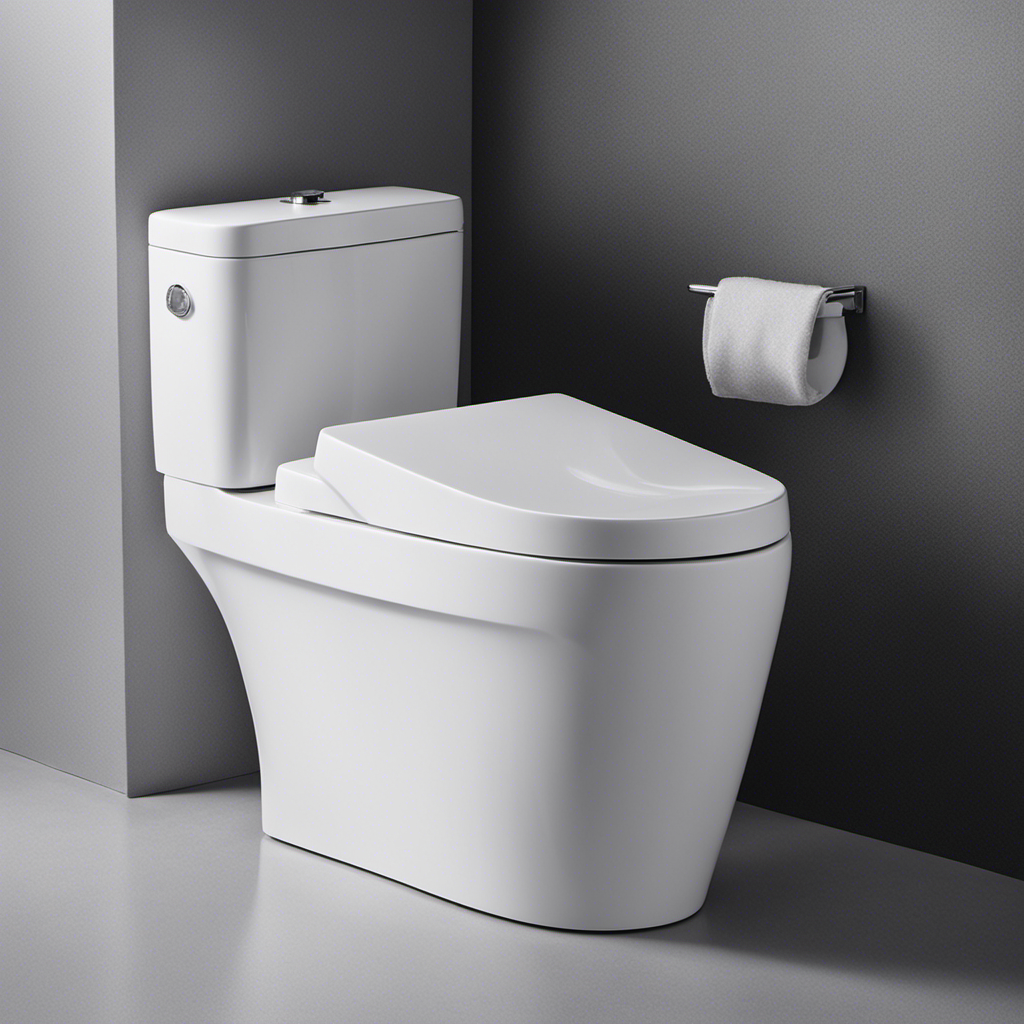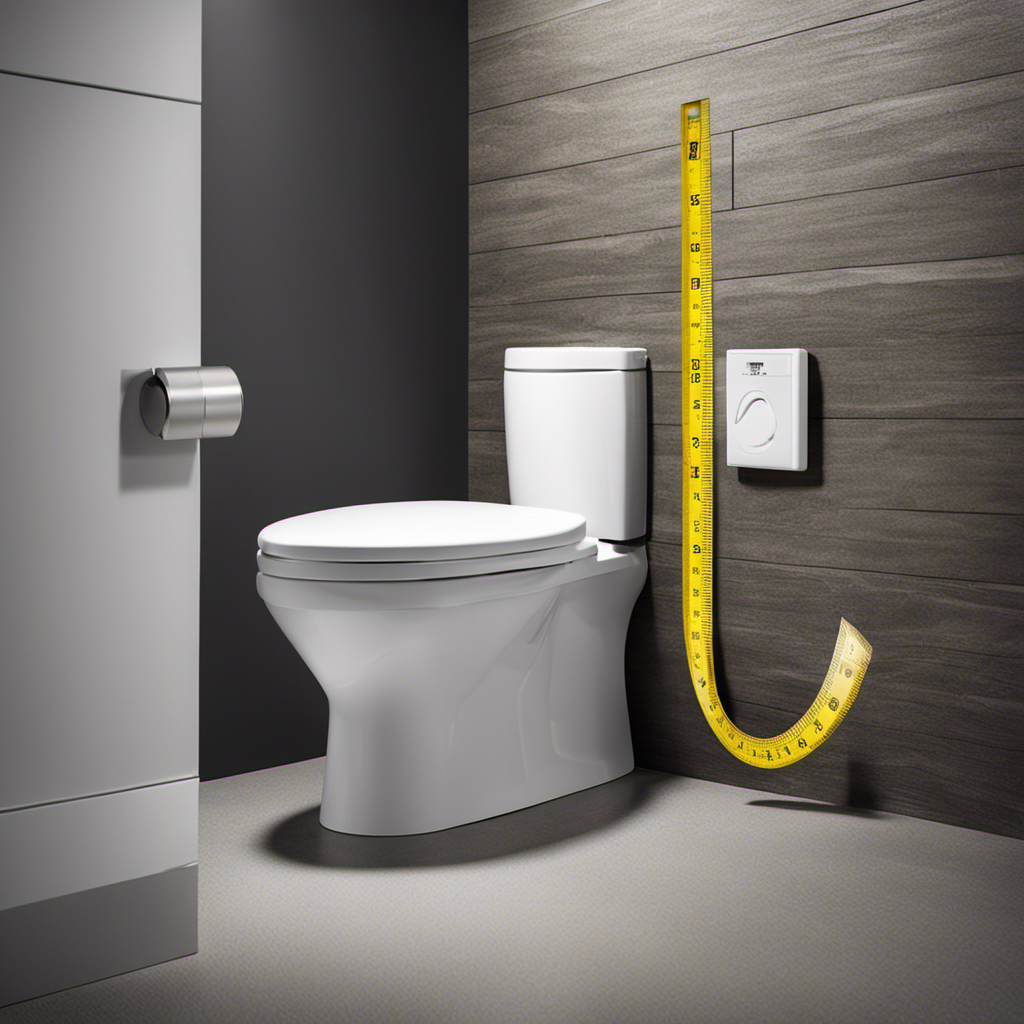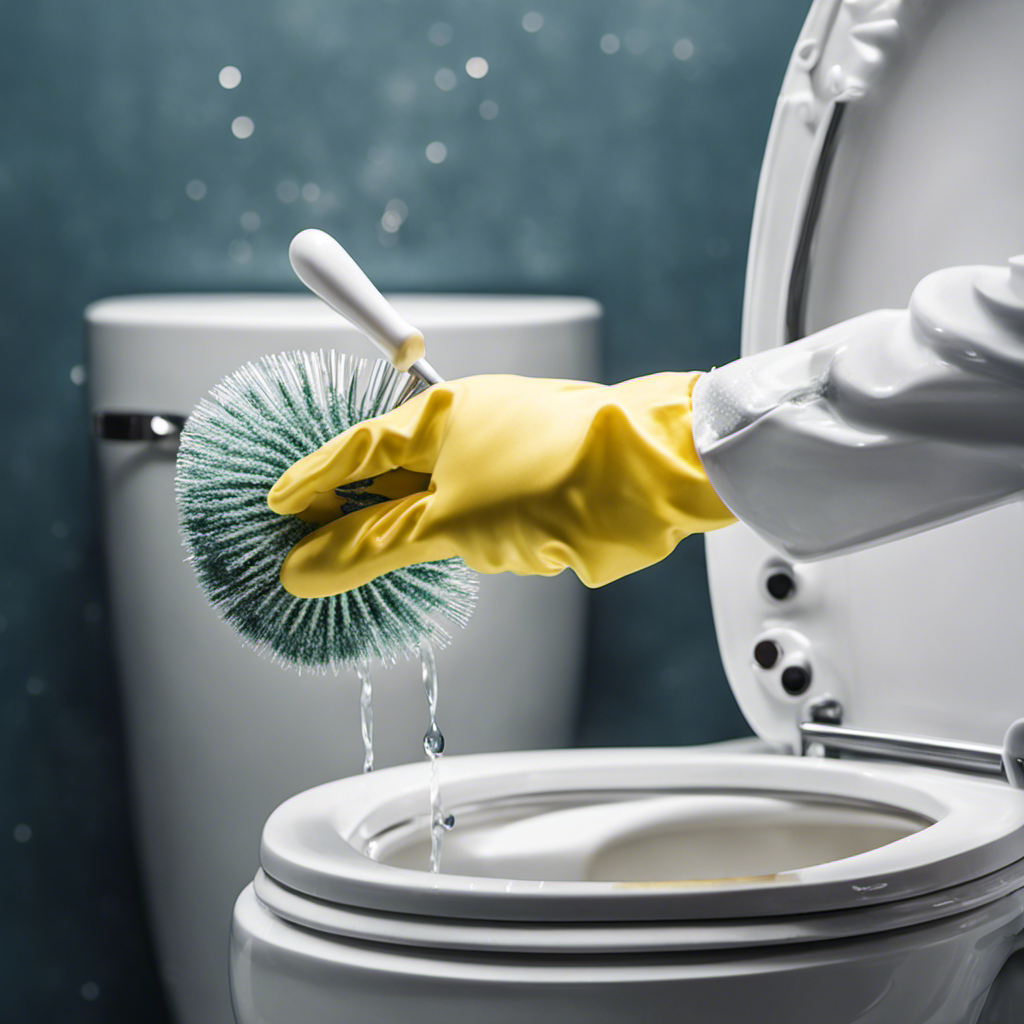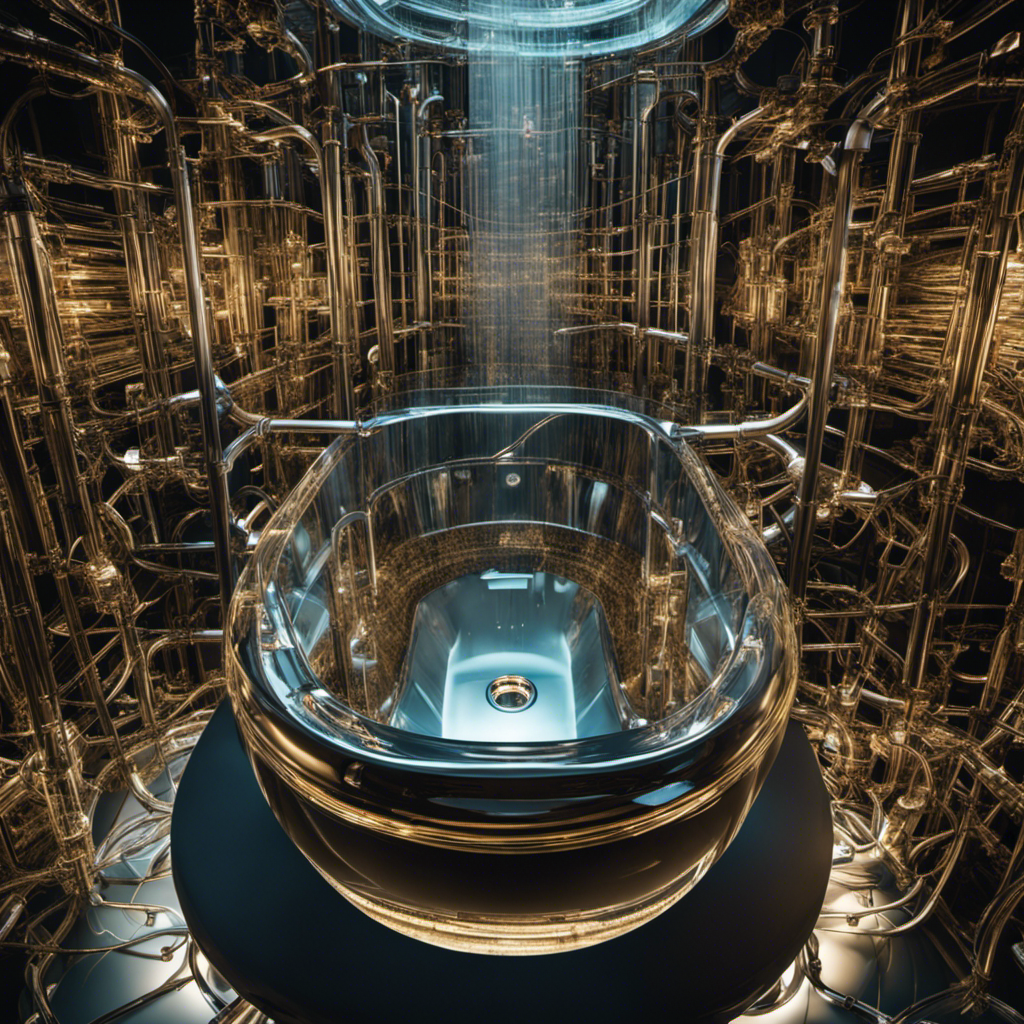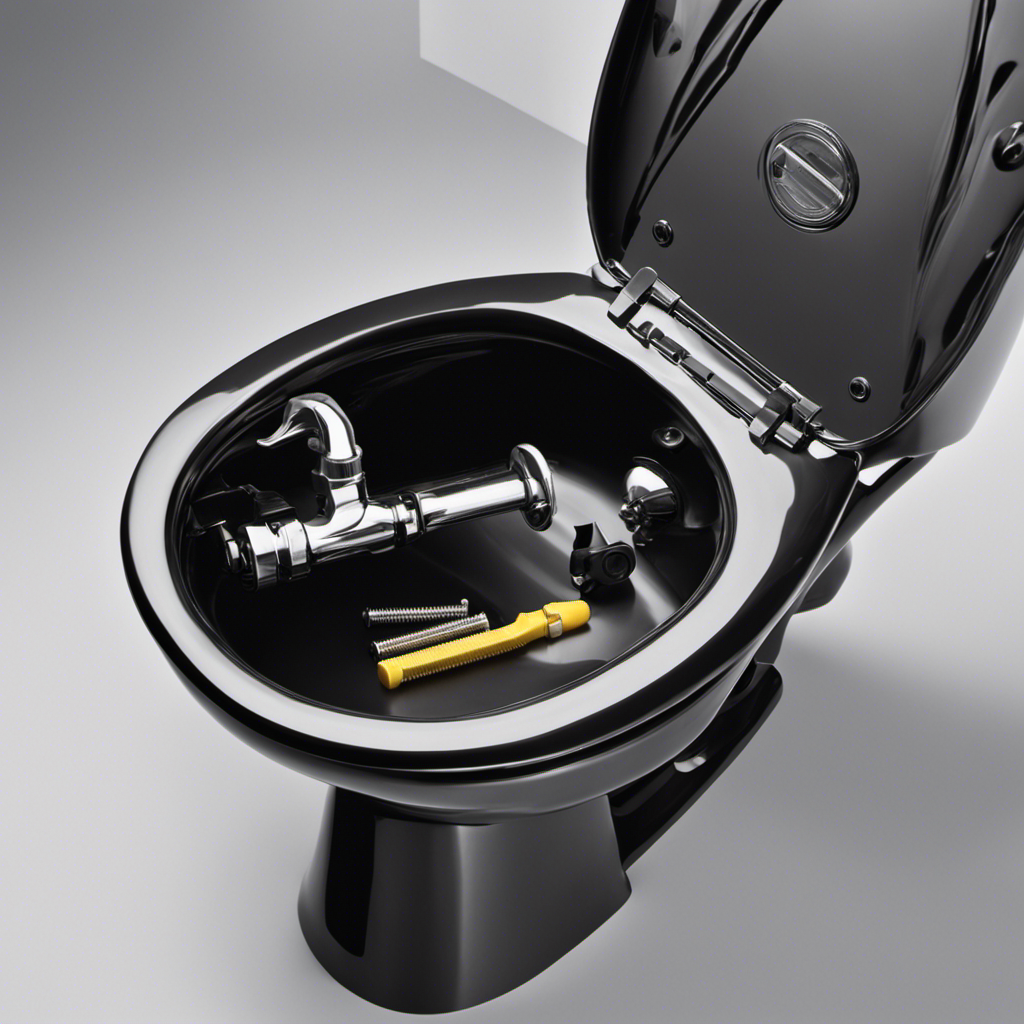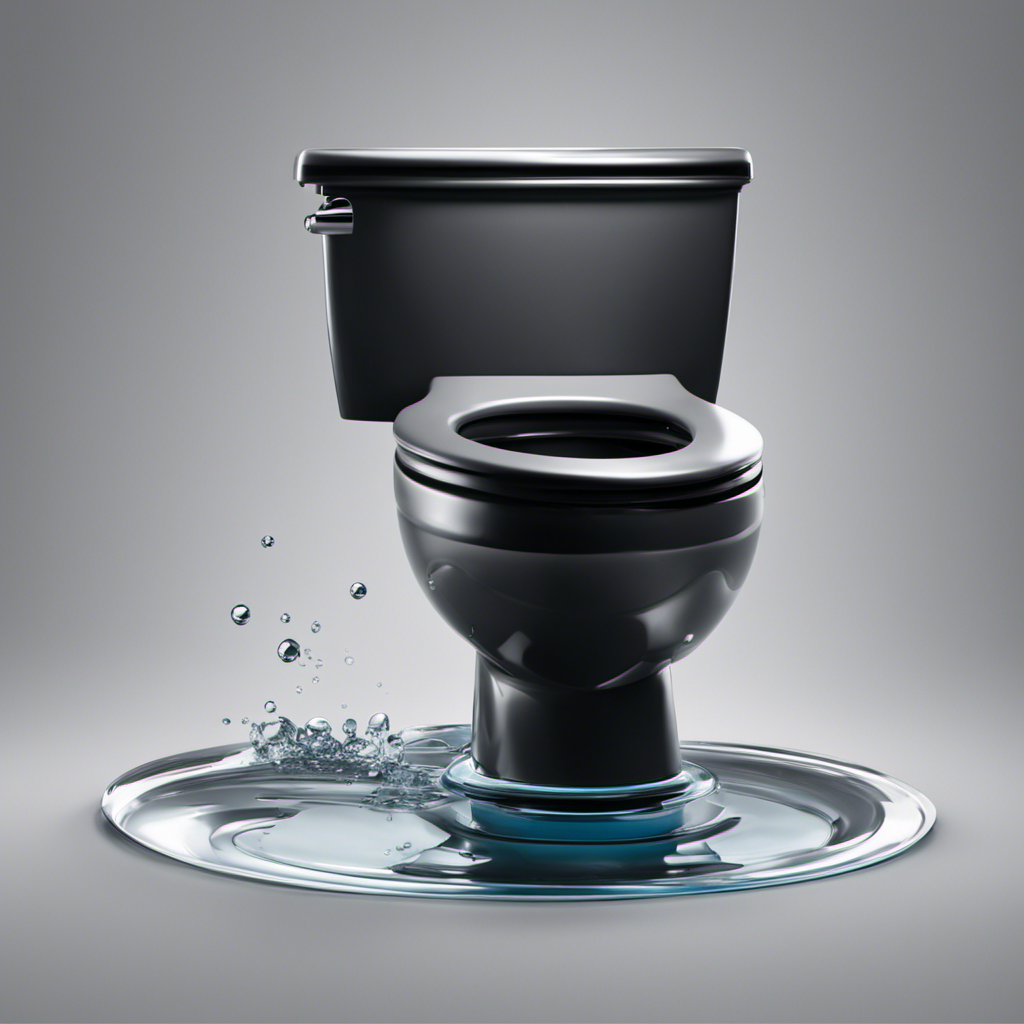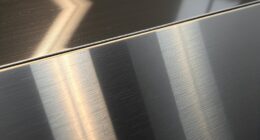Did you know that mineral buildup in toilets can lead to costly repairs and reduced water flow? In this article, I will share my expertise on how to prevent this common household problem.
By understanding the causes and signs of mineral buildup, choosing the right cleaning products, and implementing regular maintenance techniques, you can keep your toilet in optimal condition.
I will also provide natural remedies and tips for seeking professional help when needed. Say goodbye to clogged pipes and hello to a smoothly running toilet!
Key Takeaways
- Regular toilet maintenance, including using a cleaner designed for mineral deposits, can prevent scale.
- Using a water softener or water conditioner can help reduce mineral buildup.
- Hard water stains, typically white or brown in color, indicate mineral buildup in the toilet.
- DIY cleaning solutions made from natural ingredients like vinegar and baking soda can prevent mineral buildup.
Understanding Mineral Buildup in Toilets
To understand mineral buildup in your toilet, it’s important to know the common causes and how it can affect your plumbing.
Mineral buildup, also known as scale, occurs when minerals in water such as calcium and magnesium crystallize and stick to the surfaces of your toilet. This can lead to clogs, reduced water flow, and even damage to your plumbing system if left untreated.
Preventing scale requires regular toilet maintenance. One effective method is to use a toilet cleaner specifically designed to remove mineral deposits. These cleaners contain chemicals that break down the minerals and prevent them from sticking to your toilet.
Additionally, using a water softener or installing a water conditioner can help prevent mineral buildup by reducing the amount of minerals in your water.
Regular cleaning and maintenance are essential to keep your toilet free from mineral buildup and ensure the longevity of your plumbing system.
Identifying the Signs of Mineral Buildup
One way you can tell if there’s mineral buildup in your toilet is by noticing the presence of hard water stains. These stains are typically white or brown in color and can be found on the inside of the toilet bowl, around the rim, and even on the toilet seat.
Mineral buildup occurs when minerals like calcium and magnesium in the water react with air and other substances in the toilet. The main causes of mineral buildup are hard water and infrequent cleaning.
To prevent mineral buildup, you can consider installing a water softener or using vinegar or lemon juice to remove the stains regularly. Additionally, regular cleaning with a toilet brush and using a toilet cleaner specifically designed for mineral buildup can help keep your toilet free from these unsightly stains.
Choosing the Right Cleaning Products
When it comes to choosing the right cleaning products for removing mineral deposits in my toilet, I want options that are both safe and effective.
I often find myself debating between natural and chemical cleaners, wondering which one will give me the best results.
Additionally, I need a solution that specifically targets stubborn mineral deposits, as they can be particularly challenging to remove.
Safe and Effective Options
There’s a range of safe and effective options to prevent mineral buildup in your toilet. One of the most important things to consider is using water saving toilets, as they help reduce the amount of water used per flush. This not only saves water but also reduces the amount of mineral buildup in the toilet bowl. Additionally, there are DIY cleaning solutions that can be used to prevent mineral buildup. These solutions are usually made from natural ingredients like vinegar, baking soda, and lemon juice. They are not only safe for the environment but also effective in removing mineral deposits. By regularly using these options, you can maintain a clean and mineral-free toilet.
| Option | Description |
|---|---|
| Water Saving Toilets | Reduce water usage per flush |
| DIY Cleaning Solutions | Made from natural ingredients like vinegar and baking soda |
Natural Vs. Chemical Cleaners
If you want to choose between natural and chemical cleaners, it’s important to consider their effectiveness and eco-friendliness.
When it comes to preventing mineral buildup in your toilet, there are several options to consider.
One popular natural cleaning option is a water and vinegar solution. Vinegar is known for its acidic properties, which can help dissolve mineral deposits and leave your toilet clean and fresh. This eco-friendly solution is not only effective but also safe for the environment.
On the other hand, chemical cleaners often contain harsh ingredients that can be harmful to both your health and the environment. It’s always a good idea to opt for natural, eco-friendly cleaning options whenever possible.
Transitioning into the next section, let’s explore some targeted methods for tackling stubborn mineral deposits.
Targeting Stubborn Mineral Deposits
To effectively tackle stubborn mineral deposits, it’s important to use targeted cleaning methods. Here are three effective cleaning techniques for targeting stubborn stains:
-
Vinegar and Baking Soda: Mix equal parts vinegar and baking soda to create a paste. Apply the paste to the stubborn stains and let it sit for 15-30 minutes. Scrub the stains with a toilet brush and rinse thoroughly. The acidic properties of vinegar and the abrasive nature of baking soda work together to break down and remove mineral deposits.
-
Citric Acid: Citric acid is a powerful cleaner that can effectively dissolve mineral buildup. Mix a few tablespoons of citric acid with water to create a solution. Apply the solution to the stains and let it sit for a few hours or overnight. Scrub the stains with a toilet brush and flush the toilet to remove any residue.
-
Pumice Stone: A pumice stone is a natural abrasive that can be used to physically scrub away stubborn mineral stains. Wet the pumice stone and gently scrub the stains, being careful not to scratch the porcelain surface. Rinse the toilet thoroughly after using the pumice stone.
Regular Maintenance Techniques
When it comes to regular maintenance techniques for keeping my toilet clean and free from buildup, I have found three key points that have been effective for me.
First, using vinegar as a natural cleaner has been incredibly helpful in removing stubborn mineral buildup. I simply pour some vinegar into the toilet bowl, let it sit for a few minutes, and then scrub it away with a toilet brush.
Additionally, I have found that scrubbing with baking soda is a great way to tackle stains and odors. I sprinkle some baking soda into the bowl, scrub it with a brush, and then flush it away.
Lastly, installing a water softener in my home has had numerous benefits, including reducing the amount of mineral buildup in my toilet. With softer water, I have noticed a significant decrease in the amount of residue and stains that accumulate in the bowl.
Vinegar for Removing Buildup
You can use vinegar to easily remove mineral buildup in your toilet. Vinegar is a versatile and cost-effective cleaning agent that can effectively dissolve mineral deposits and restore the shine to your toilet bowl. Here are three reasons why vinegar is a great alternative to harsh chemical cleaners:
-
Natural and safe: Vinegar is a natural product that is safe to use in your toilet without worrying about harmful fumes or chemicals.
-
Effective against mineral buildup: The acidic nature of vinegar helps break down and dissolve mineral deposits, making it an effective cleaner for removing stubborn stains and buildup.
-
Cost-effective: Vinegar is readily available in most households and is an affordable alternative to expensive toilet cleaners.
Scrubbing With Baking Soda
Using baking soda is an effective and affordable method for scrubbing away stains and keeping your toilet clean and fresh.
Not only does baking soda have excellent cleaning properties, but it is also gentle on surfaces, making it a great alternative to harsh chemical cleaners.
To clean your toilet with baking soda, simply sprinkle some onto a damp sponge or brush and scrub the stains away. The abrasive nature of baking soda helps to remove tough stains without scratching the porcelain.
Moreover, baking soda has natural deodorizing properties, leaving your toilet smelling fresh and clean.
If you’re looking for alternative cleaning methods, baking soda is a versatile and reliable option.
However, if you want to prevent mineral buildup in your toilet, you may also consider the benefits of using a water softener.
Water Softener Benefits
If you’re tired of dealing with hard water, a water softener can provide numerous benefits for your household.
Hard water, which contains high levels of minerals like calcium and magnesium, can have a negative impact on your plumbing system, appliances, and even your skin and hair.
Here are three reasons why water softener installation is a smart choice:
-
Extended appliance lifespan: Hard water can cause mineral buildup in your appliances, leading to reduced efficiency and a shorter lifespan. A water softener helps prevent this buildup, extending the life of your appliances and saving you money in the long run.
-
Cleaner, softer clothes: Hard water can make it difficult for laundry detergents to fully dissolve, leaving behind residue on your clothes. With a water softener, your clothes will come out cleaner and softer, and you’ll use less detergent.
-
Healthier skin and hair: Hard water can leave a film on your skin and hair, making them dry and dull. Installing a water softener will help improve the condition of your skin and hair, leaving them feeling smoother and healthier.
Overall, investing in a water softener can have a significant impact on your home and well-being. Say goodbye to the negative effects of hard water and enjoy the benefits of soft, clean water throughout your household.
Implementing Preventive Measures
One effective way to prevent mineral buildup in your toilet is by regularly using a vinegar and baking soda mixture. This natural descaling agent helps to dissolve limescale and prevent its formation in your toilet bowl.
To implement this preventive measure, simply follow these steps:
- Mix equal parts of vinegar and baking soda in a small bowl or container.
- Pour the mixture into the toilet bowl, making sure to cover the entire surface.
- Let the mixture sit for at least 30 minutes to allow it to work its magic.
- Scrub the toilet bowl using a toilet brush to remove any remaining mineral buildup.
- Flush the toilet to rinse away the mixture and reveal a clean, limescale-free bowl.
Natural Remedies for Mineral Buildup
To keep your toilet free from mineral buildup, try regularly using a mixture of vinegar and baking soda. This natural remedy is highly effective in breaking down the mineral deposits and preventing them from accumulating in your toilet bowl.
Here’s how you can use this mixture:
- Pour half a cup of baking soda into the toilet bowl.
- Follow it up with one cup of vinegar.
- Let the mixture sit for at least 30 minutes before scrubbing the bowl with a toilet brush.
The combination of vinegar and baking soda creates a powerful solution that helps dissolve the minerals and remove any stubborn stains.
Additionally, incorporating water filtration systems in your home can help reduce the mineral content in your water, further preventing mineral buildup in your toilet.
If the mineral buildup is severe, you can also consider using commercial descaling agents specifically designed to tackle stubborn mineral deposits.
Seeking Professional Help and Advice
Seeking professional help and advice from a plumber is highly recommended if you are dealing with severe mineral deposits in your toilet. While there are DIY solutions available, it is important to understand that severe mineral buildup can be a challenging problem to tackle on your own.
Plumbers have the expertise and specialized tools to effectively remove stubborn mineral deposits and restore your toilet to its optimal condition. They can also provide professional recommendations on how to prevent future mineral buildup.
Additionally, consulting a plumber ensures that the problem is addressed correctly and prevents any potential damage to your toilet or plumbing system. Remember, it’s always better to seek professional assistance when dealing with severe mineral deposits to avoid unnecessary complications and ensure long-term solutions.
Conclusion
In conclusion, maintaining a clean and mineral-free toilet is essential for a hygienic and efficient bathroom.
By understanding the causes and signs of mineral buildup, choosing the right cleaning products, and implementing regular maintenance techniques, you can prevent this annoying problem.
Remember, prevention is better than cure, so don’t forget to implement preventive measures such as using water softeners or vinegar solutions.
And if all else fails, don’t hesitate to seek professional help and advice. As the saying goes, ‘A stitch in time saves nine,’ taking proactive measures now will save you from bigger headaches later.
